The untourist’s guide to Europe: The Spanish coast
Editor’s note: Meenakshi Reddy Madhavan has long been one of our favourite writers and people. She also has the greatest virtue of a traveler: a wide-ranging curiosity and interests. Meenakshi is most serendipitously living in Berlin—so we shanghaied her into writing a series of personal, unique, ‘un-tourist’ guides to cities in her backyard.
In this installment, quite like the name of her column, she takes the path less travelled at a time when tourists are scarce, along the Spanish coast. Too much tapas in Mallorca, aquarium spotting in Valencia, and vintage shopping in Zaragoza. There’s always a good walking tour and she can’t help but throw in a reading recommendation. We are not complaining! Please offer comments, suggestions etc over at talktous@splainer.in—and we will send them on to her.
ICYMI: Check out Meenakshi's cool insider guide to Berlin, awesome guide to Rome and brilliant guide to Vienna.
Written by: Meenakshi Reddy Madhavan is the author of eight books, across genres: literary fiction, mythological reinterpretations, young adult and short stories. Her latest book is ‘Soft Animal’, published by Penguin Random House in 2023. She lives in Berlin and writes about it in her newsletter The Internet: Personified.
In February, cold from weeks of unrelenting freezing rain, my husband and I decided to flee, like all Germans do, to Mallorca. It would be too chilly to go to the beach so we decided to base ourselves in Palma, the capital of that small island, and make little excursions as we saw fit. From there, we wanted to wend our way up the Spanish coast, stopping off at Valencia before flying home from Barcelona (which deserves a story of its own so I’m leaving it out of this edition.)
The sun burst out and warmed us despite the chilly breeze, and Palma and Valencia are dreamy getaways, just the sort of spring sunshine you’ve been fantasising about through the cold winter months. Perhaps where you are there are no cold winter months, regardless, if you are going to bookmark this guide, bookmark it for the shoulder seasons—September, October or February, March. You miss the tourists, you get lovely walks, and you can enjoy everything Spain has to offer, including a cool breeze that promises balmy days ahead.
Palma de Mallorca
Like many parts of this side of Spain, Palma de Mallorca was settled several times. The Romans founded the city in 123 BC, where they held power for about eight hundred years before passing through the hands of the Emirate of Cordoba, then the ruler of Valencia and Aragon, then pirates, then plague. The city still has lots of gorgeous Moorish architecture—a highlight across this part of Spain, medieval streets and old churches, not so much that you’ll get FOMO at missing it all, but enough that you can do a quick cultural jaunt if you’re feeling guilty about “not doing anything” on holiday. But I’d recommend you turn off that part of your brain that says you must earn your vacation in some way. Palma is a place to let go, sit at small cafes for hours—no one will rush you—take a leisurely stroll down to the beach to work up an appetite, do some shopping and so on. This is not your museum/history destination, but it can be, is what I’m saying, if you’re desperate for an art fix.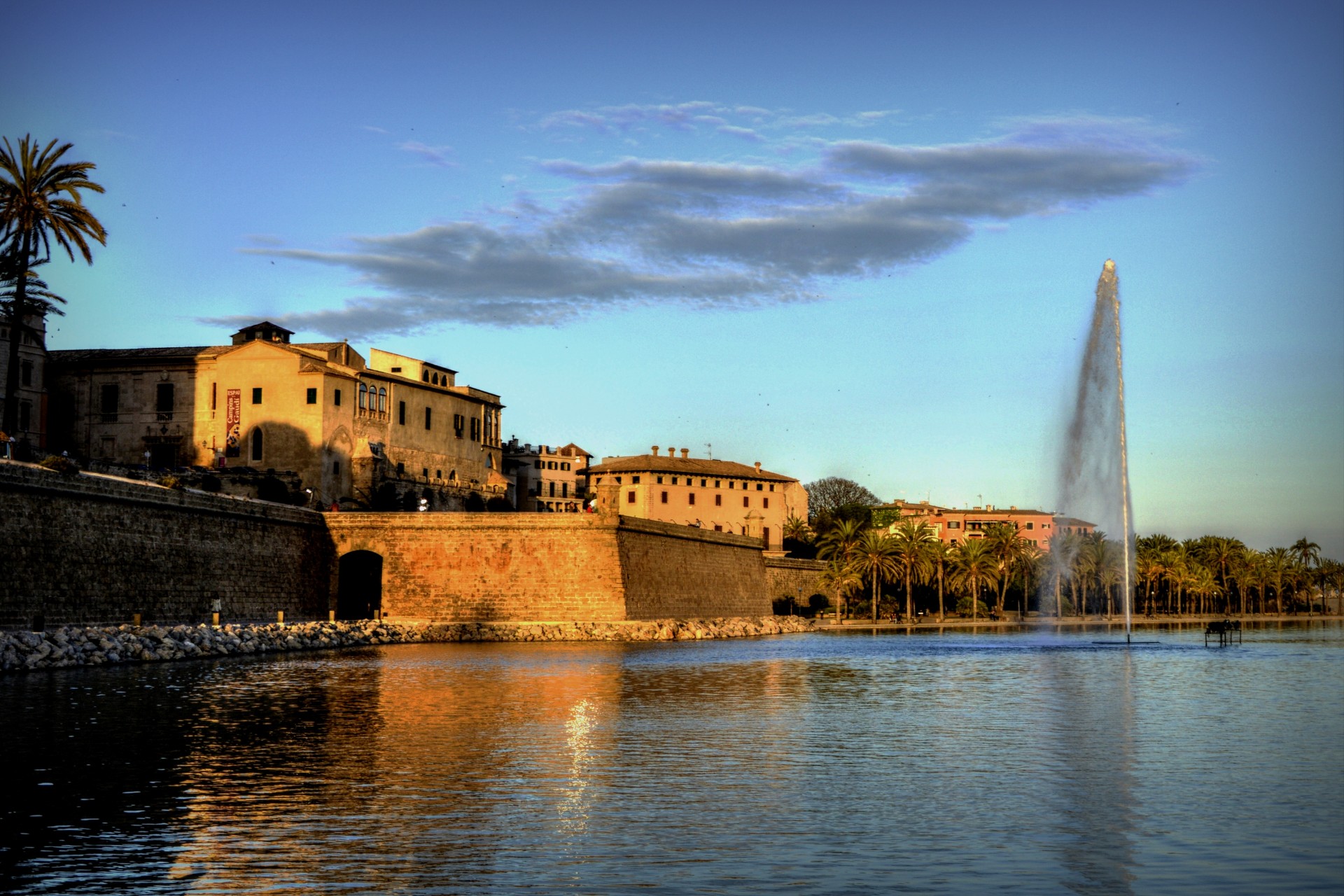
Where to stay
This is a posh destination for European travellers, so you’ll have many resorts and fancy villas you can rent out if that takes your fancy. There’s also a number of five star hotels which you likely don’t need me to tell you about. We stayed at the no-frills Amic Colon (map) (which is an ominous name but was clean and quiet, which is all you really need) as budget as you can get without going the hostel route. Want a slightly fancier stay without breaking the bank? I also heard good things about Brondo Architect Hotel (map) and the Palau Sa Font (map).
Things to do
Take the historic train to Soller about 25 kilometres from Palma. You can choose to do this as a round trip, or do as we did and get off at Soller, walk around and take a bus back, which will arguably give you better views as it doesn’t have to go through several tunnels. The train is lovely, but if you’ve ever taken the toy train from Kalka to Shimla, you’ll know how slow these historical trains can be. Even the ticket exhorts you to take it easy and relax, don’t be in a hurry to get there.
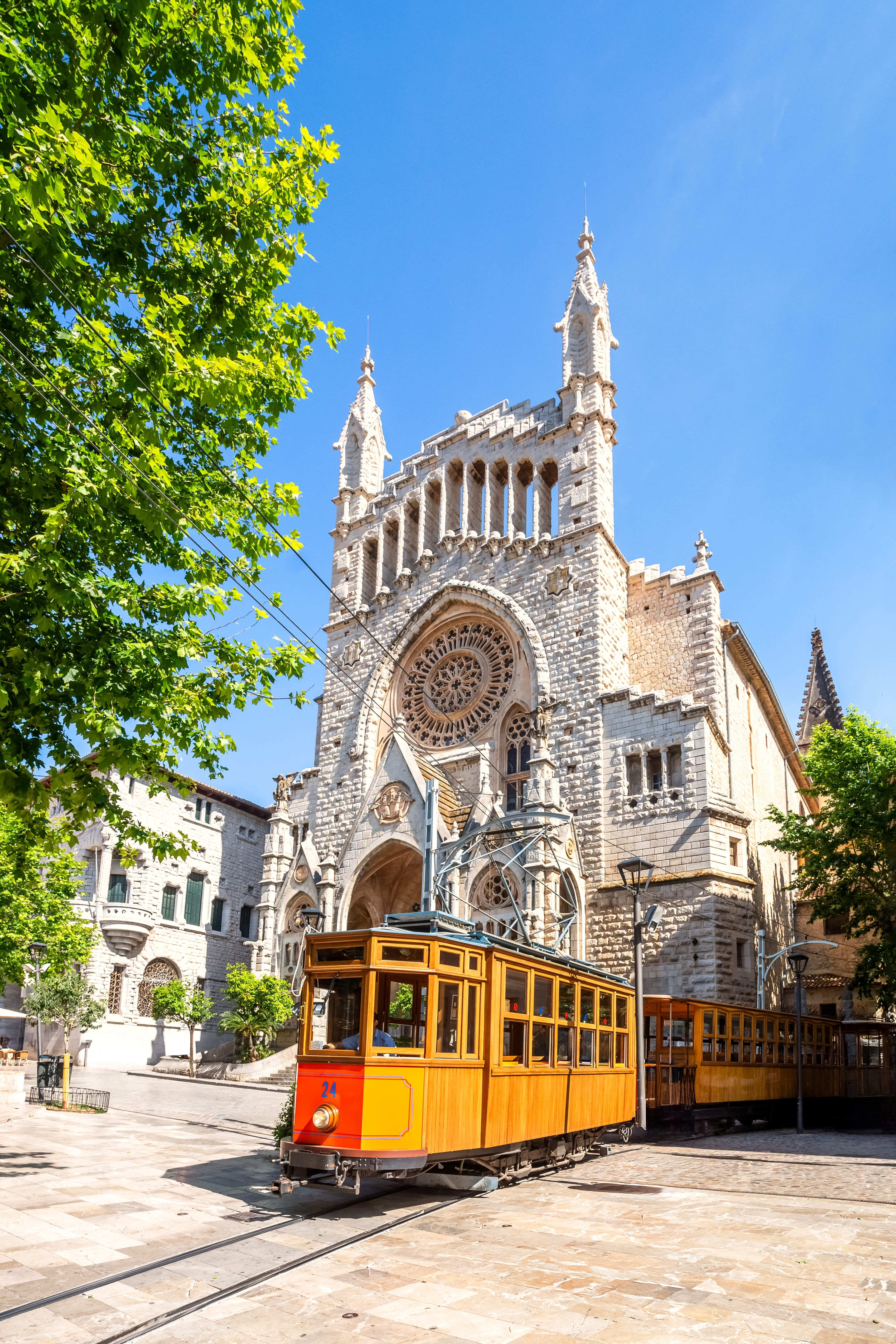
Once you arrive, you can take a tram to the bay or make your way by foot (but it’s a long walk). The beach is lovely and flat, you can sit on the stairs and admire the water plus there’s a supermarket right there to buy your cold drinks. Soller itself is a small historical town, now chock-full of tourists making the day trip up.
If you can, consider going a little further up to Valldemossa, famously the place where Chopin stayed with his lover George Sand, who wrote her famous book ‘A Winter in Majorca’ here. (There’s a tiny museum in their honour). More recent literary visitors to the general Soller/Valldemossa area include my forever favourite Deborah Levy who also wrote in the winter in Mallorca, and also wrote about Sand and Chopin in her memoir ‘Things I Don’t Want To Know’.
NB: An excellent reading recommendation for something to carry along with you. If you’re more in the mood for something light and pacey, there’s ‘The Vacationers’ by Emma Straub which is fun.
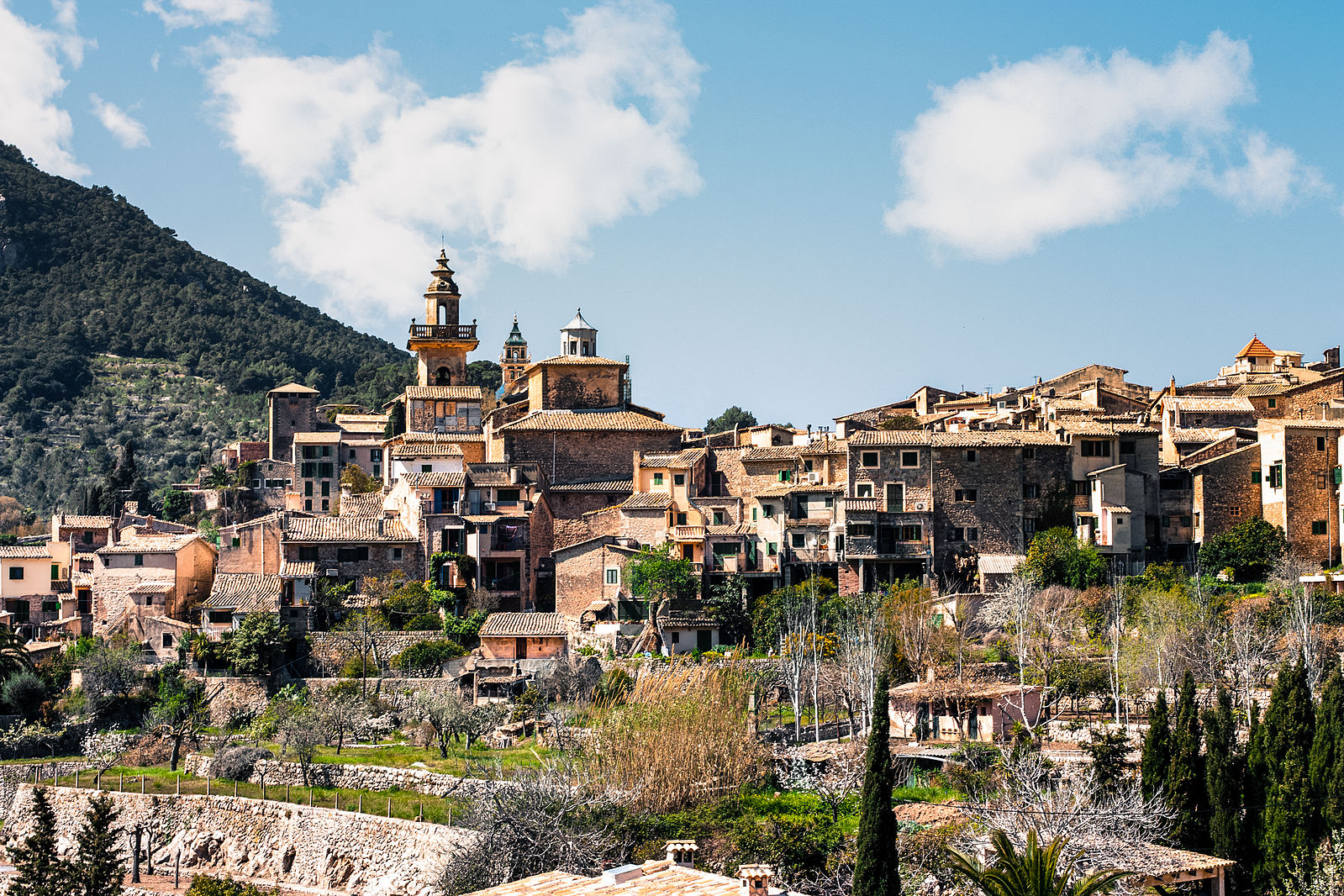 Palma also has some decent small art museums. The Museum Fundación Juan March has about seventy works of art from artists you’ll recognise like Picasso, Dali and particularly Joan Miro who called Palma home. It also has free entry, which is a good excuse to visit if it’s too hot/cold/windy.
Palma also has some decent small art museums. The Museum Fundación Juan March has about seventy works of art from artists you’ll recognise like Picasso, Dali and particularly Joan Miro who called Palma home. It also has free entry, which is a good excuse to visit if it’s too hot/cold/windy.
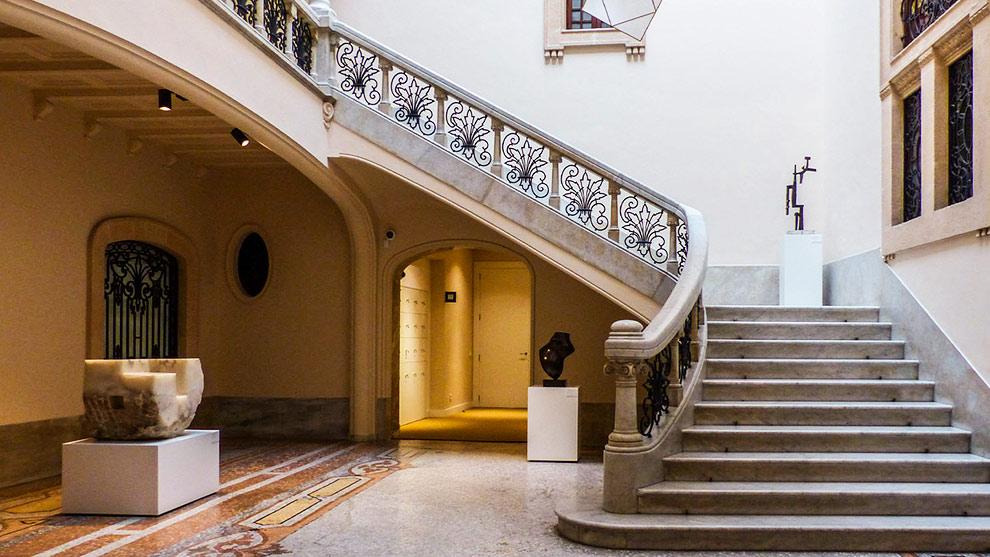 Then there’s Es Baluard which hosts contemporary art exhibitions and has a really beautiful building converted from historical public land into long clean lines and vast spaces, set over three stories. There’s art inside from the 19th century on, including more Miro and other famous Spanish artists from avant garde to postmodern.
Then there’s Es Baluard which hosts contemporary art exhibitions and has a really beautiful building converted from historical public land into long clean lines and vast spaces, set over three stories. There’s art inside from the 19th century on, including more Miro and other famous Spanish artists from avant garde to postmodern.
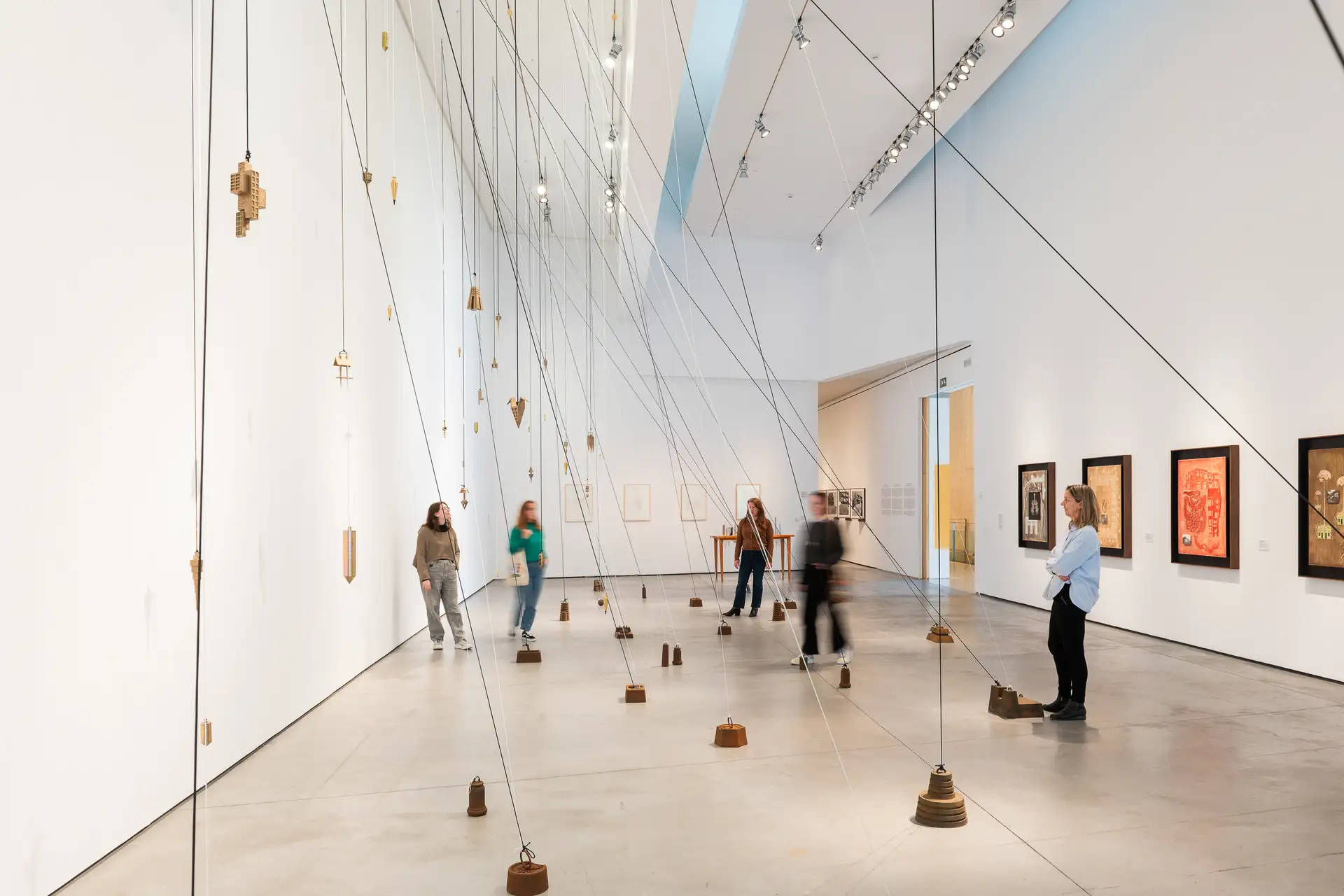
What to eat
I’m not going to lie, if you’re planning on existing on a tapas-only diet, it won’t be very exciting for you as a vegetarian. You’ll probably be faced with the same fried padron peppers and (separately) fried potatoes at each tapas bar. We eat meat, so it wasn’t a problem for us (although by the end of our trip we were thoroughly tired of tapas and ready for something else), however, I did search for a few good vegetarian restaurants for you which you could experiment with.
Es Ginebro (map) has vegan and vegetarian Spanish food including a “menu del dia” (menu of the day) which is a fixed course meal for lunch. Not Spanish, but coming up a lot in my research was Temple Natura Cafe Garden (map), which most people recommend visiting specifically for their outdoor space which is apparently tree shaded and gorgeous. They serve Mediterranean and Colombian food.
Now, for my fellow omnivores, here are some places I tried (and loved):
Molto Barra Bar (map): A bit “off the beaten” track so frequented mostly by Palma locals and Spanish tourists, you won’t hear much English around you. Delightfully junky interiors, filled with things to look at as you nurse your drink. A glass bar encloses what tapas you can order, just go up and point. There are also larger mains available. NB: While in Spain, I mostly ordered a Tinto de Verano, which is a delicious cold red wine shandy of a sort. This part of Spain is also known for its vermouth which is served on the rocks with a slice of orange or lemon.
Bar Mavi (map): Come for the outdoor tables where you can watch people go by, stay for the “pica pica,” literally “small bites,” smaller than tapas—allowing you to try a number of things.
Mercat D’Oliver (map): All Spanish towns have one or more covered food halls, open for lunch, where you can go and have a little picnic or an informal meal, sitting up on a high stool against a bar. We went with seafood at one of the several seafood stalls, just choosing one that looked busy and gorging ourselves on fried sardines, garlic shrimp and calamari.
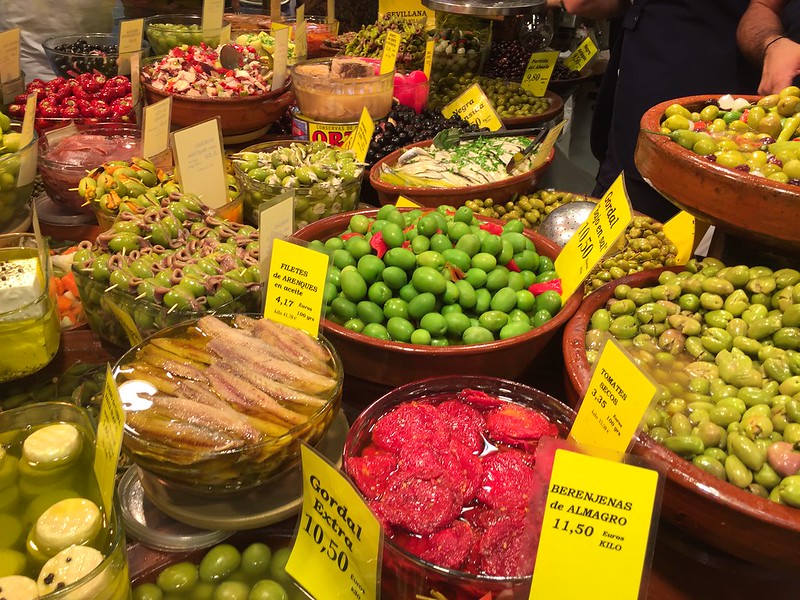
What and where to shop
There’s lots to buy in Palma, and several long pedestrianised shopping streets (standouts include Costa d’en Brossa [map] and Carrer de Sant Miquel [map]) allows you to do this to your heart’s content. Shoes, especially, look out for rope-soled espadrilles at one of the many handcrafted shoe stores, or buy Camper brand shoes—available around Europe, yes, but born right here on this island.
At the previously mentioned Mercat D’Oliver you’ll find all manner of food souvenirs, from olive oil to paella kits. My personal favourites were, of course, the vintage stores, I stopped by at Unico (map), mostly branded second hand with a large selection of jackets, and actually bought myself something (a beautiful black dress with a fringe hem) at the very specifically titled Quint Vintage and actual second hand clothing (map). (It’s got a nice men’s selection too, my husband picked up a lovely wool and leather jacket for a very low price.)
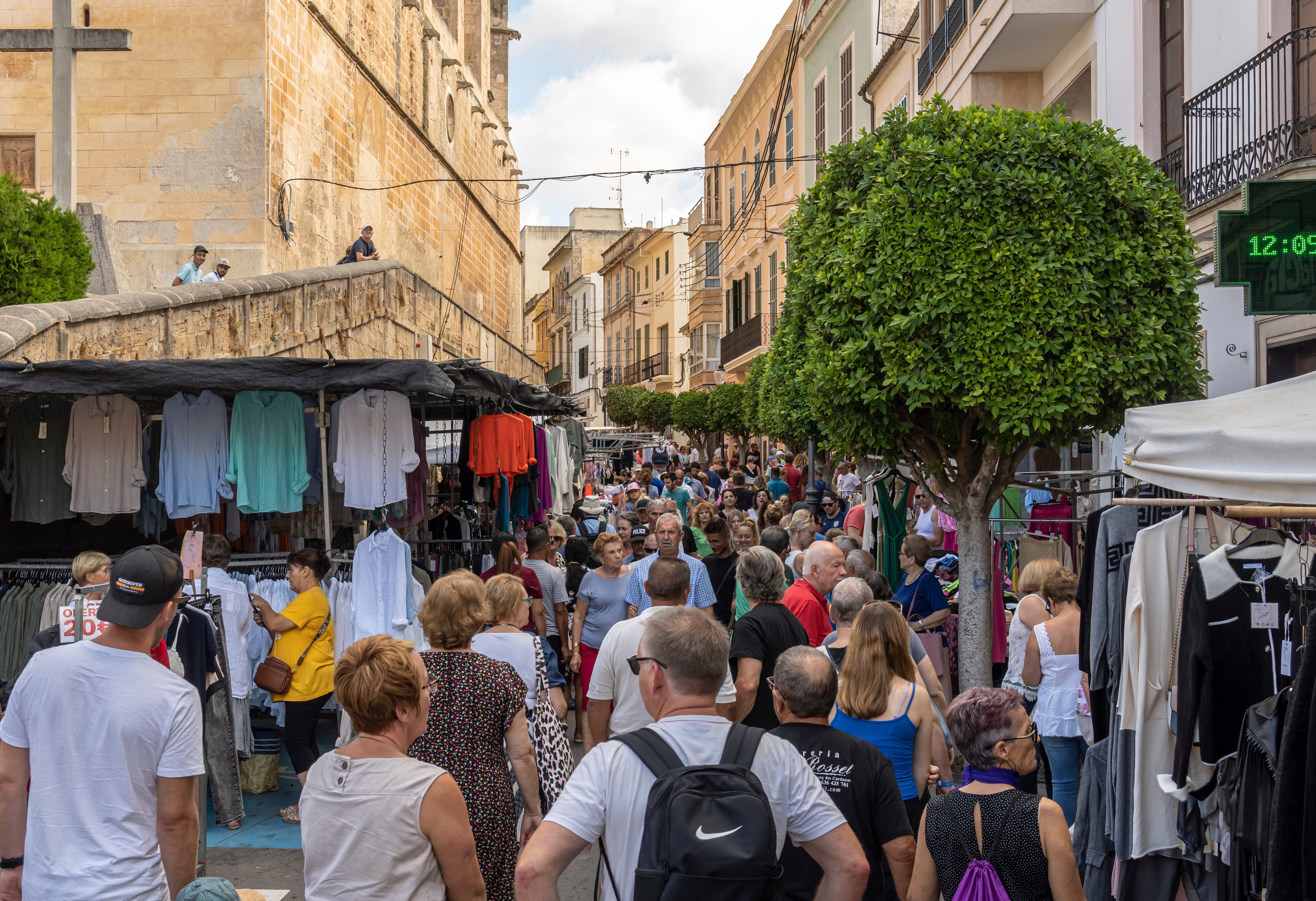
Getting to Valencia
There’s the boring way (flying) and then there’s the fun way, which you absolutely should do, which is taking a seven hour ferry across the Balearic sea from the island of Palma to the mainland. Consider it part of your vacation, a version of a sea cruise for less money. We chose to get a private cabin for two for not that much more money, a good choice if you’re with small children or you just need a long nap. The cabins are sea view and non, and have two bunks on opposite sides, a small porthole, a desk and an attached bathroom. Otherwise, since it’s only a seven hour journey, the seats on the ferry are the super comfortable reclining sort, where you can lounge all day or choose to sit at the cafe or the restaurant and watch the sea.
NB: this ferry is very popular with long distance truck drivers, who then rush to the restaurant as soon as it opens and finish all the food, so be sure to go early if you want lunch because even waiting half an hour cleans it out, as we found from a sad experience.
Valencia
I didn’t really know much about Valencia before we booked our tickets and hotel, apart from that there’s an Instagram filter named after it. It had a nice name, I thought—this I found out later, comes from the Latin for “strength or valour” where they retired Roman soldiers making Valencia, our tour guide said, one of the few places that has been settled by retirees since ancient times. It’s been in continuous occupation ever since, much like Palma, and owes its winding roads and architecture to the mingling of all these cultures.
It’s a gorgeous city, all small lanes which suddenly burst into sunshine-y plazas, a well-maintained old town with scarcely any vehicular traffic, and since we visited in orange season, the fruits were everywhere, not just in the shops, but also rows of trees, laden with fruit, like exotic Christmas ornaments. (NB: Don’t try eating one of the road-tree oranges though, they’re only for show, so they’re bitter and dry.)
An internet friend I met there said that her favourite part of living there was that there was nice weather 364 days of the year, “Except,” she said sadly, looking at the drizzle, “today.” I didn’t mind too much, it was picturesque for that one day with the rain softly falling on cobblestoned streets, and the next day the sun came out as promised and we sat outside, and drunk it in.
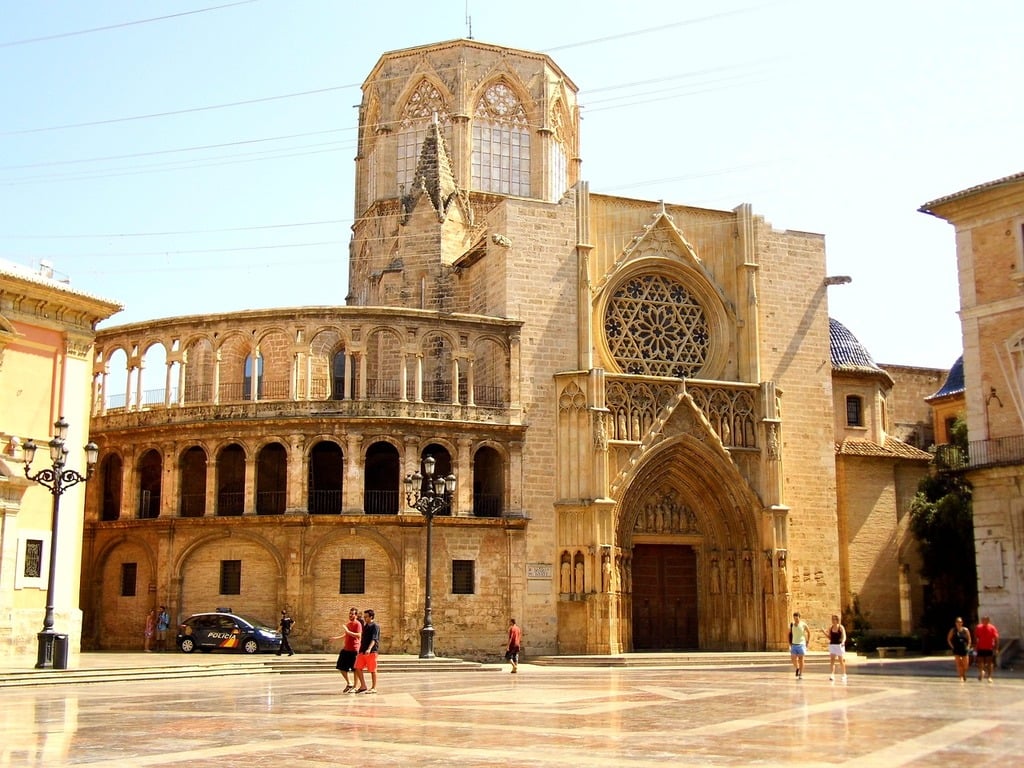
Where to stay
We chose a budget hotel in the old town, and were glad for it, because there were such lovely walks there and all only within a five minute radius. Ours was called Hospederia del Pilar (map) and when they say budget, they truly mean it, absolutely zero amenities, a hard double bed, a clean shower and a window facing another wall. (You can get nicer rooms with balconies, but you have to pay extra.) However, the location more than made up for it, and at those low prices, I wasn’t complaining—too much. For slightly fancier but still budget friendly stays, check out Zalamera Bnb (map), Valencia Arthouse (map) and Hotel Venecia (map).
Things to do
There’s loads of things to do in Valencia, their City of Arts and Sciences is a large architectural complex dedicated to museums, cinemas, gardens and a large covered arena for sports and concerts. The old town itself is worth several days of wandering within and getting lost, the roads are narrow and made for exploring. There’s giant Gothic cathedrals and last but not least, a city beach, which it was sadly too cold to get down to when I visited. If you need help narrowing things down, here are some of my top recommendations:
L'Oceanogràfic (map): This is the largest aquarium in Europe, with a separate dolphinarium and ocean tank. It’s got sharks, sea lions, beluga whales, penguins and many other animals from 500 different species. It’d be easy to spend your whole day here, in fact, that’s what I’d recommend you do. Afterwards, walk around the rest of the Arts and Sciences buildings, their architecture makes for gorgeous selfies for Instagram bragging rights.
 Museum of Fine Arts (map): This is the second largest art gallery in Spain and has an extensive collection of classical art, including huge altarpieces and a whole section dedicated to Valencian artist Joaquin Sorolla, whose portraits are luminous and lifelike. I wandered in on a whim and was extremely glad that I did. There’s also always a temporary exhibition which takes a deep dive into the work of a single artist, either from modern or classical times which is well worth a visit. The museum is free, and so nice to while away a few hours. (NB: Most of the signage is in Spanish or Catalan, so make sure you have data to work your Google Translate).
Museum of Fine Arts (map): This is the second largest art gallery in Spain and has an extensive collection of classical art, including huge altarpieces and a whole section dedicated to Valencian artist Joaquin Sorolla, whose portraits are luminous and lifelike. I wandered in on a whim and was extremely glad that I did. There’s also always a temporary exhibition which takes a deep dive into the work of a single artist, either from modern or classical times which is well worth a visit. The museum is free, and so nice to while away a few hours. (NB: Most of the signage is in Spanish or Catalan, so make sure you have data to work your Google Translate).
 A good walking tour: This is something I always recommend for people wanting to get the hang of a new place and my Valencian one went into great depth about the history of the city, why the roads were so twisty (hint: it has to do with modesty!) and why there’s so much rice in this part of Europe. I went on Guruwalks and found a lovely young woman named Doe who really went into depth about what made her city.
A good walking tour: This is something I always recommend for people wanting to get the hang of a new place and my Valencian one went into great depth about the history of the city, why the roads were so twisty (hint: it has to do with modesty!) and why there’s so much rice in this part of Europe. I went on Guruwalks and found a lovely young woman named Doe who really went into depth about what made her city.
What to eat
This is the place to try paella (pictured below) if you’ve always been curious. A sort of bland biryani (sorry!), it’s a large fragrant rice dish studded with either fish, pork or vegetables, so it can be vegetarian friendly if you still haven’t gotten any Spanish food on your trip. There’s loads of places to find this dish, the one we checked out being the one right next to the Mercat Central de Valencia, called Comida para llevar El Palomo (map).
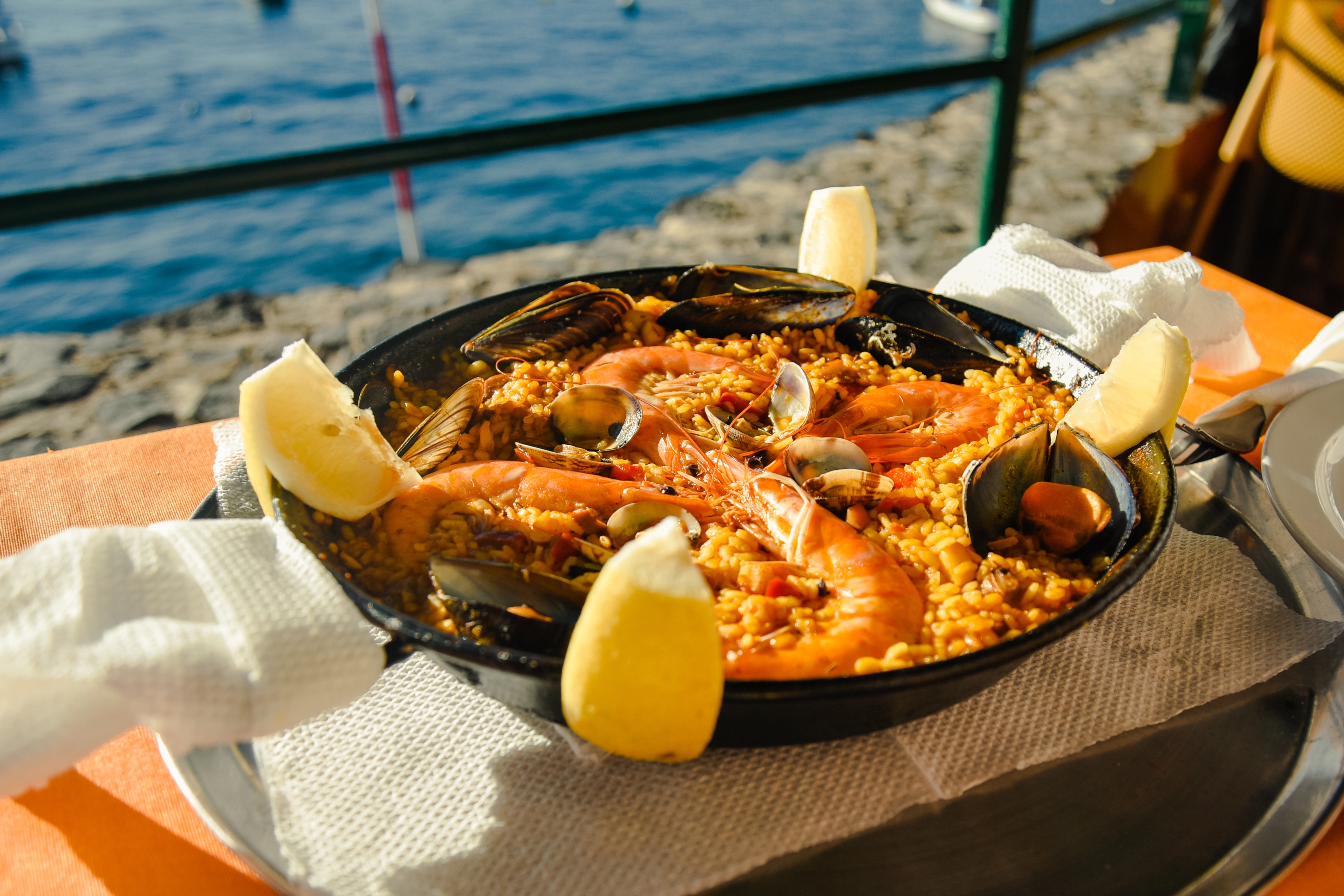
Take a wander through the Mercat as well, while you’re there, to pick up takeaway boxes you can eat on the square. We picked up boxed lasagna and minestrone soup from one of the Italian stores here and had a late lunch in the sunshine.
Valencia is a good place to experiment with non-Spanish food as well. I had one of the best Roman pastas I’ve eaten outside Italy at a small bistro called Restaurant A Roma Cucina (map). Then there were delicious take away dim sums and other Chinese fast foods at Restaurant Mybaos Express (map). Stop for baked goods at anything marked “Horno,” our breakfast was often freshly baked croissants with coffee.
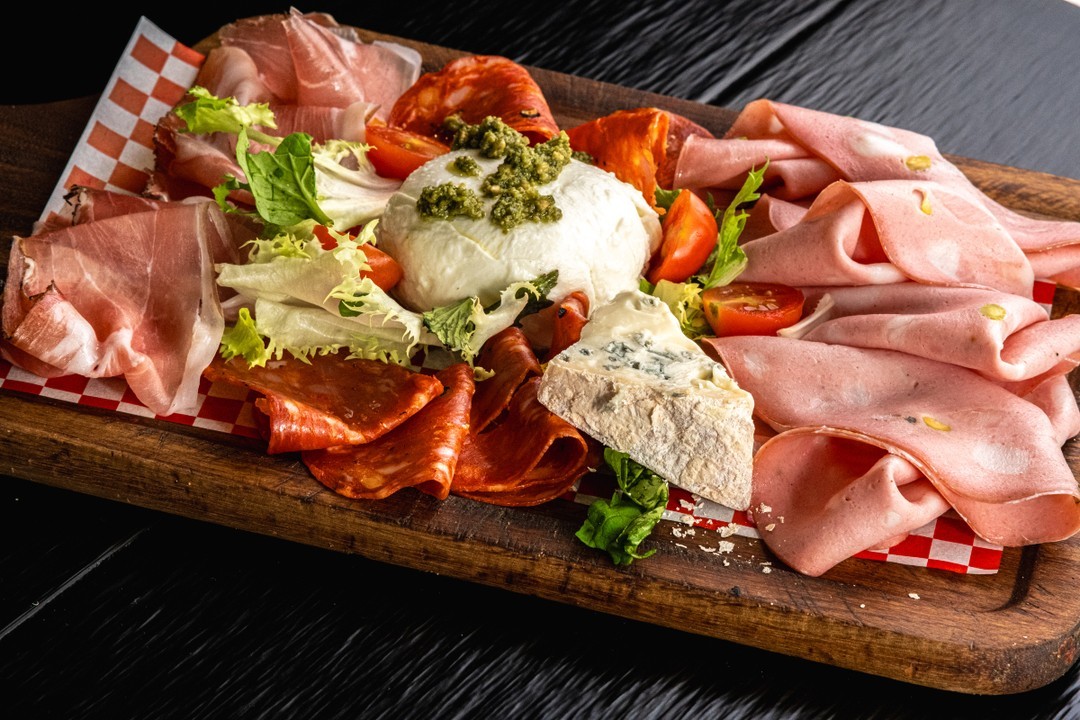
What to shop
There’s many vintage shops in Valencia from Clot Vintage (map) to La Buena Estrella (map). They’re well-stocked, but slightly more pricey than other second hand shops in other countries, so something to bear in mind. My stand out souvenir purchase was a pair of brass hoops from a cute little jewellery shop called Vestopazzo, definitely worth going in and having a browse. Below is an image of vintage bags from Clot Vintage.

Detour: Zaragoza
A quick note on Zaragoza, which we stopped by for a few days on our way up to Barcelona. Inland, rather than coastal, Zaragoza is by the Ebro river, and has some monuments of historical interest, but what’s most fascinating about this place, only a few hours from Barcelona is how little tourism has found it. In that sense, it’s a good place to visit to get a real idea of a small Spanish city. The residents are still friendly and curious about you, not jaded by tourism, the food and drink is entirely Spanish, and all the main tourist attractions are easily accessible—no lines! This may not be a place you add to your first visit to Spain but if this is your second or third trip, it’s worth making the detour. Here are the places I liked the most, all mixed up.
Aljaferia Palace (map): This palace is what made me add Zaragoza to my list. We had been planning to visit Alhambra, but even three weeks in advance, all the tickets were booked up. Someone had described Zaragoza’s version as the “mini-Alhambra” and it truly is, sort of the whole thing cut down to miniature. You have your beautiful gardens and stone lattice halls, then on top of that, like a wedding cake, there’s the Christian part of the palace. Walking through, you exit via Zaragoza’s actual modern-day parliament, where, if no one is in session, you can actually wander through and sit at the seats.
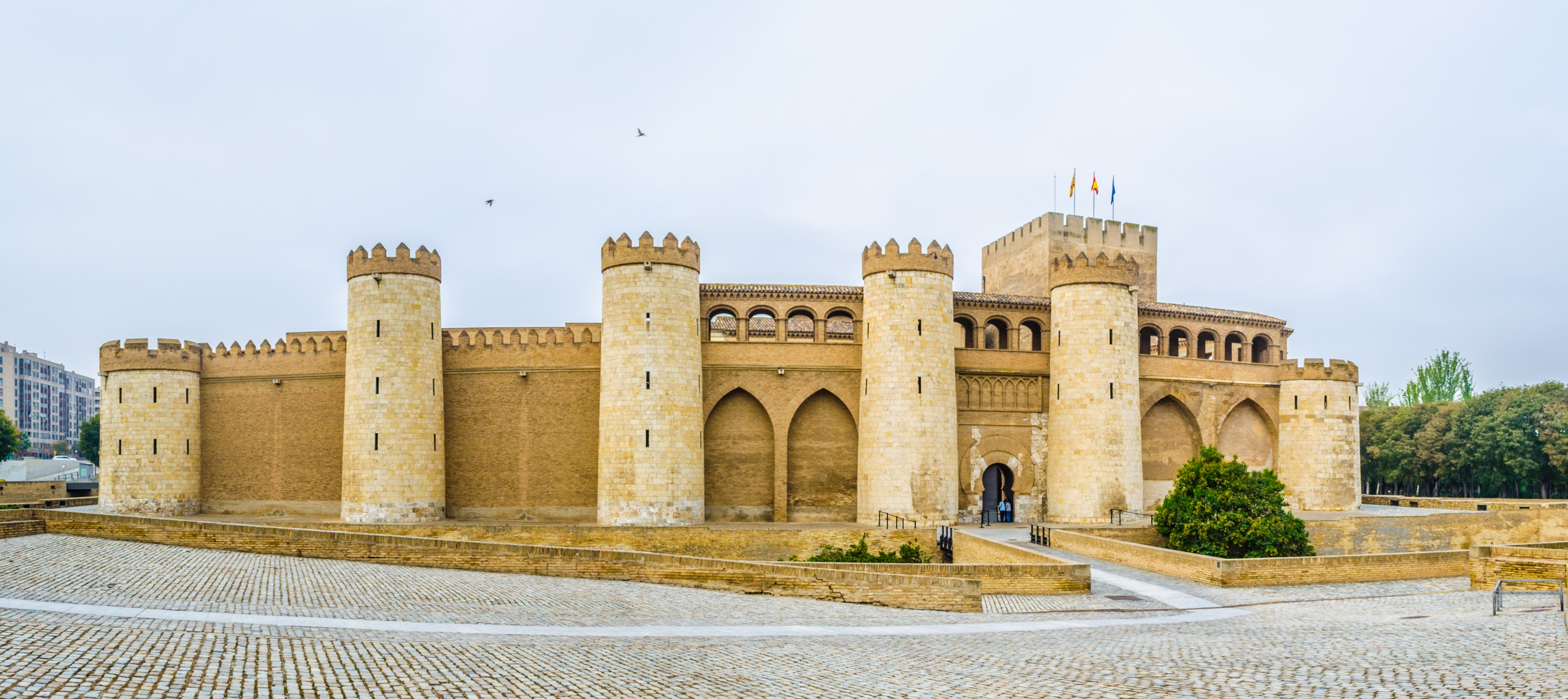
El Tubo (map): This is a small warren of streets dedicated mostly to tapas restaurants. It’s extremely crowded, both with locals and Spanish tourists, and getting any place to sit is a matter of luck, but it’s immense fun if you like to bar hop and nibble a little at each place.
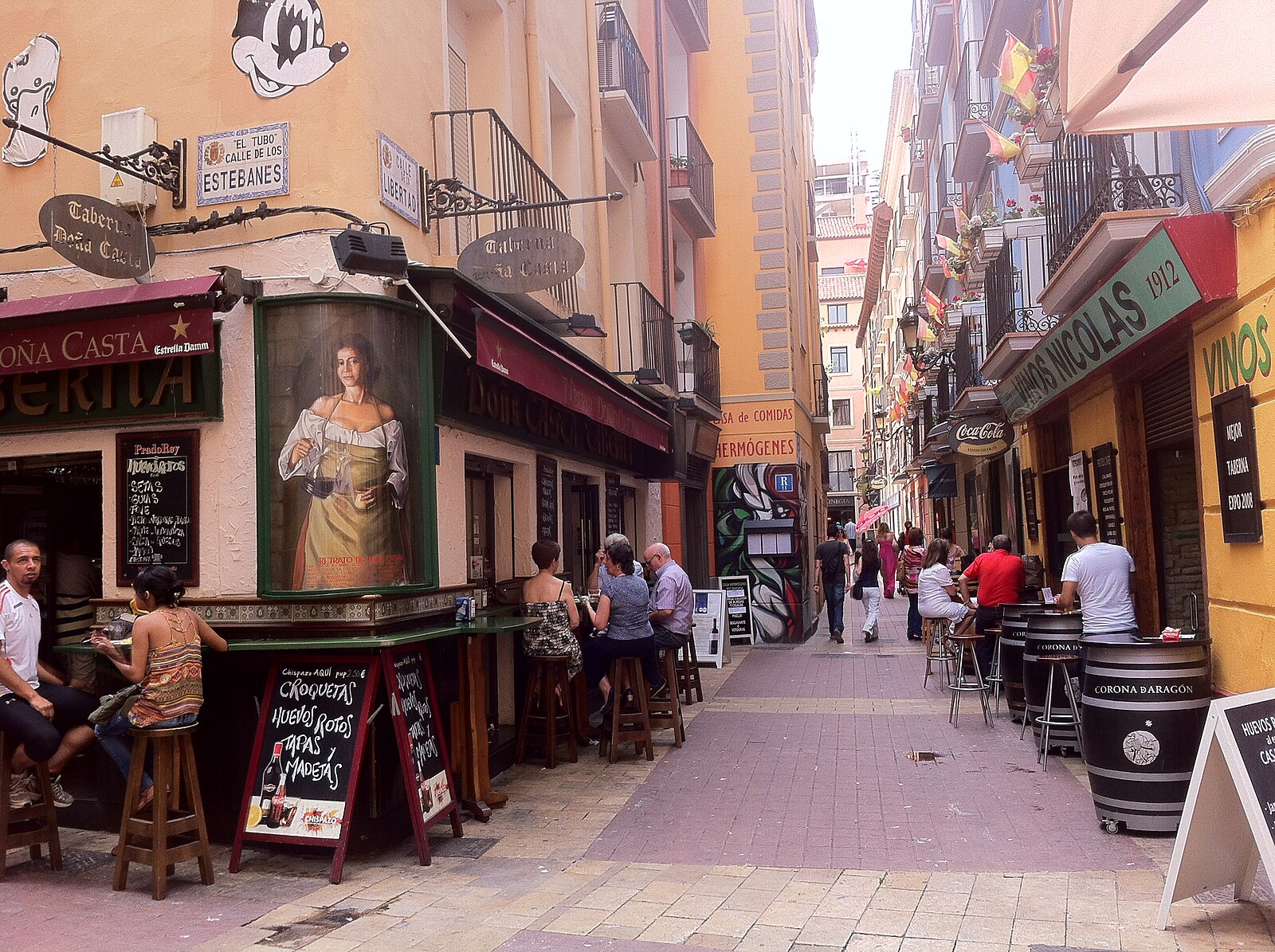
Pilar Basilica (map): This is a baroque church, an excellent example of its style, in the centre of the old town area, you can’t miss it if you’re walking around it. It’s worth going inside if you have the time to admire the Goya frescos at the art museum enclosed within it and the Renaissance choir stall, but even if you stay outside, there’s plenty to look at, especially the yellow and green tiled mosaic on the domes.
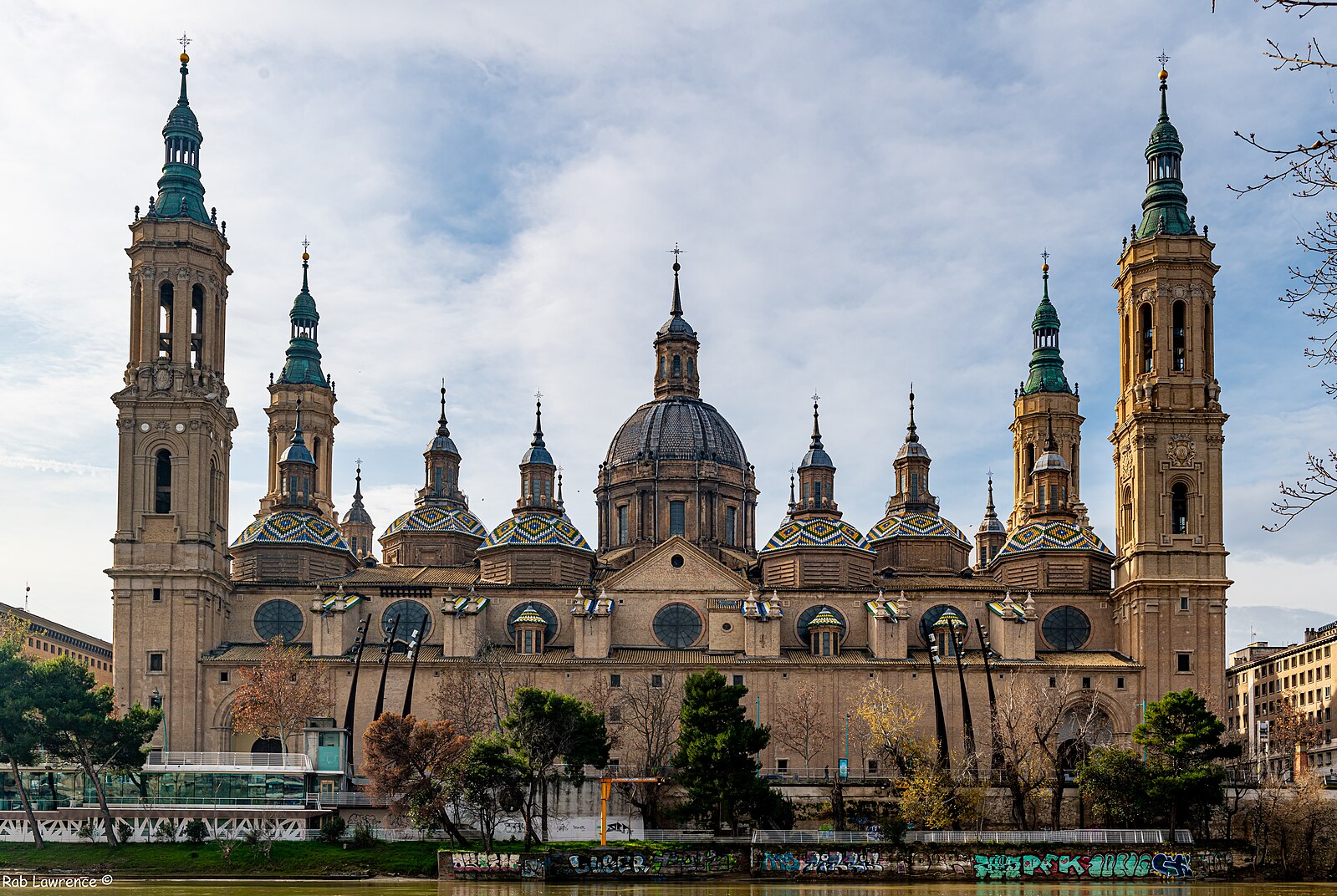
Surprisingly, for such a local town, Zaragoza has really good vintage shops, from Black Light (map) to Calypso (map) to Ggardens (map)—that’s where I got a really nice wool Benetton skirt from the ‘80s. They also have a pretty decent second hand bookshop called Re-read Liberia (map) which has a small but sturdy English language selection.
So there’s my recommendations for small cities in Spain beyond Madrid and Barcelona. Bienvenida as the Spanish say! Have a wonderful time!

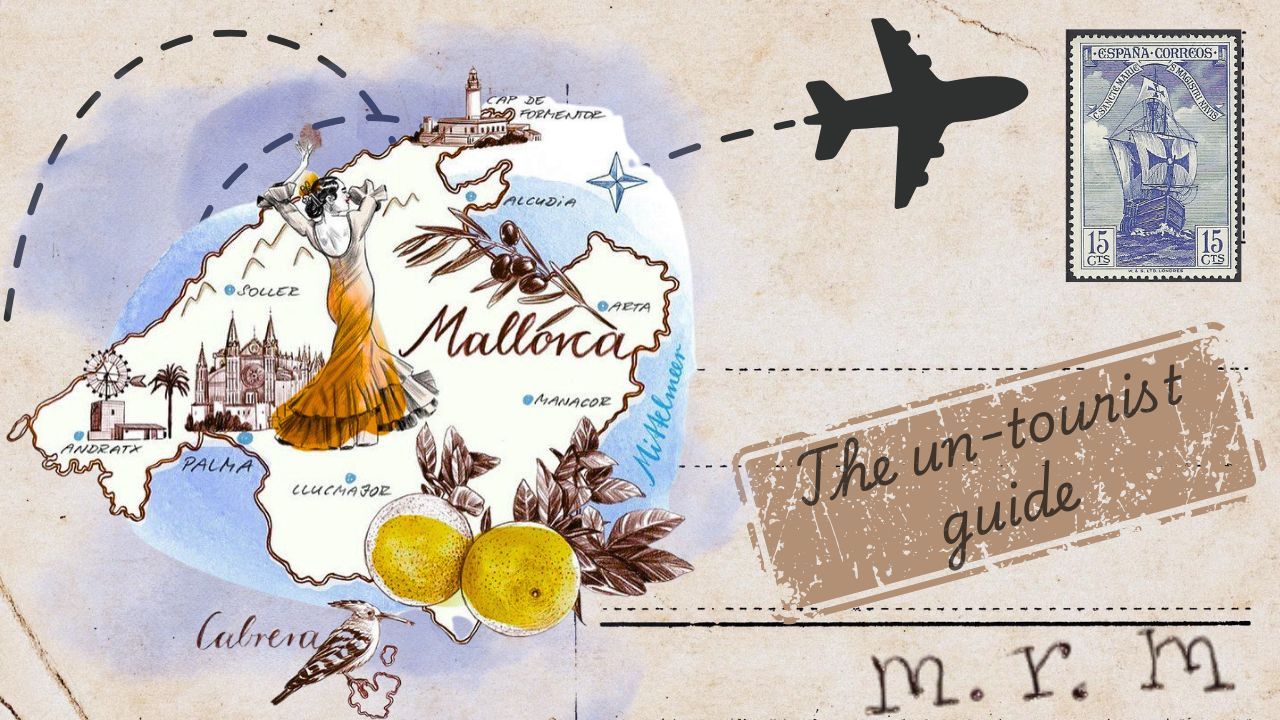
 souk picks
souk picks